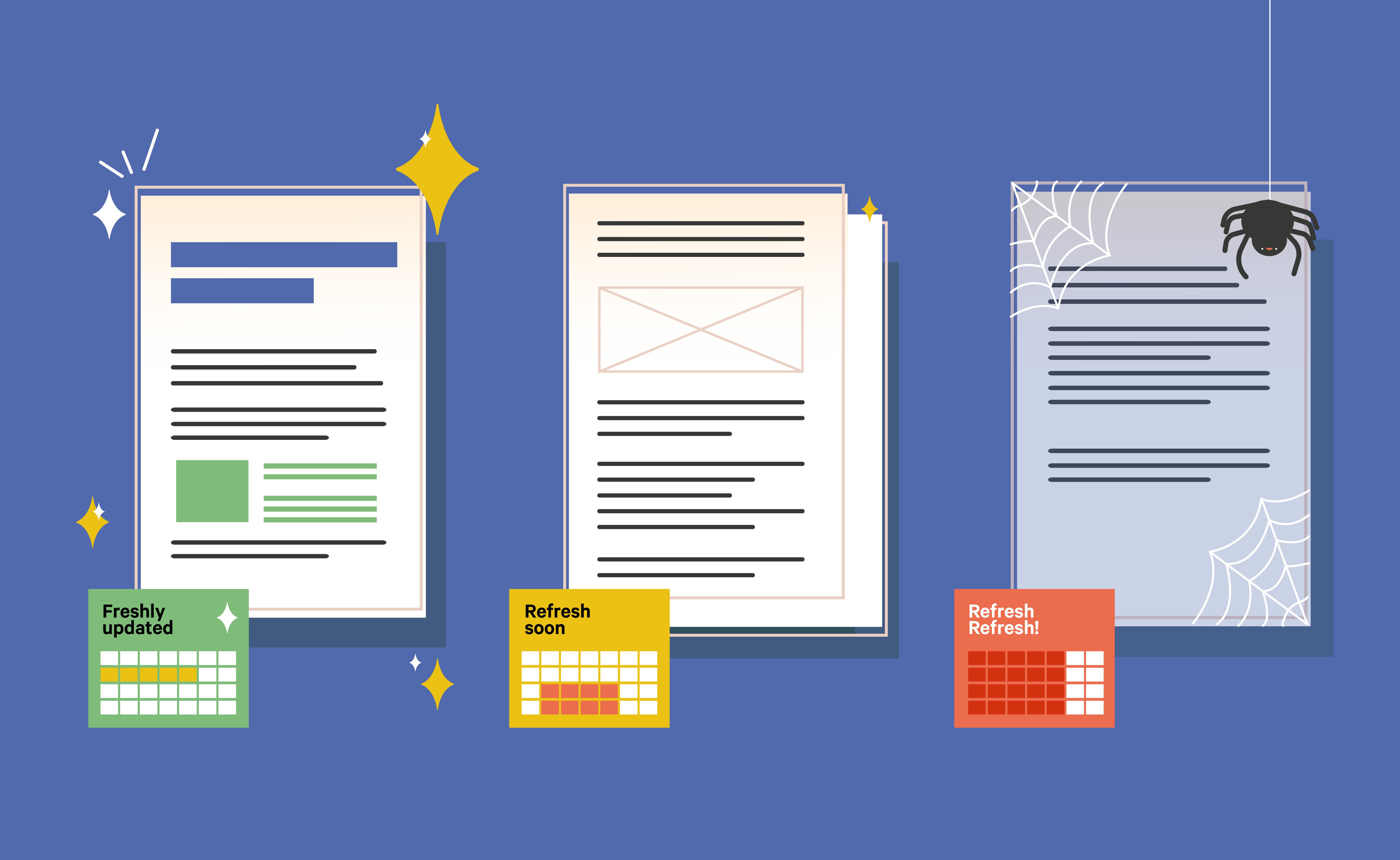How To Rewrite a Blog Post (And How Often To Do It)



No matter how evergreen your content may be, it doesn’t stay fresh forever. Much like the oldest needles of an evergreen tree, which are replaced as they grow brown, even the most timeless blog posts need updates to continue thriving online. In fact, refreshing and rewriting blog posts can be pivotal to the success of your blog.
Why are these tactics so effective? And how often should you rewrite blog posts anyway? Here’s what you need to know about making your evergreen content even greener.
Why update old blog posts?
As time goes by, the information on your website will grow outdated. Progress and new ideas in your industry, as well as the changes you make to your own product or service, can affect the accuracy of your blog posts.
Out-of-date content means slipping keyword rankings.
Using data from our work with three long-term clients, we’ve found that keyword rankings take a nosedive after two years. Most articles peak within six to 20 months. If you’re not updating old blog posts — either with small refreshes or complete rewrites — your website is losing visibility on search engine results pages (SERPs). As a result, you’ll also lose out on organic traffic, leads, and sales.
How often should you refresh or rewrite blog posts?
Blog posts that are more than a year old are good candidates for updates. Aim for an update at least once every 15 months.
While perpetually updating your blogs can take a toll on your bandwidth, this frequency allows you to spread out your updates wisely (especially hefty rewrites) without seeing your rankings slip.
Don’t worry if you see your keyword ranking slip one or two months after your blog post publish date. Depending on the level of competition for a keyword, it can take anywhere from three to six months to see significant results. SEO is a long game, so you don’t want to change your strategy before your winning streak can begin.
How much could your company grow with growth content?
Calculate your expected growth in organic visits based on the average Nectafy client.
Get all these numbers in your inbox.
How To Refresh Or Rewrite Blog Posts
Numerous blog posts may come of age at around the same time. Once that 15-month mark arrives, you need to decide which blog posts you’ll update first and the degree to which you’ll do so.
Here’s a step-to-step guide to simplify your decision-making process and properly revamp your blog content.
1 Prioritize
If you have more than one blog post in need of updates, your priority should be the content that has the biggest impact on your key performance indicators (KPIs), which are the metrics that contribute to your business goals.
- If your KPI is organic traffic, blog posts that generate the most traffic should be your priority.
- If your KPI is your lead conversion rate, prioritize posts that get more leads, even if they get less traffic.
2 Evaluate
Once you know which post to update, determine the degree to which you’ll update your content. Three types of blog post updates that we use at Nectafy include:
A rewrite, or a completely reworked article, is ideal if you haven’t hit your primary keyword target or any keyword target at all. Rewrites can get you back on the first page of Google.
An addition—adding new content to an existing article—is needed if your keyword ranking dropped, but your blog post still shows up on the right SERP.
A combination—combining two existing articles into one—is a must if you have two blog posts targeting the same keywords. This causes keyword cannibalization, in which your website begins to compete with itself and drag both posts’ rankings down.
3 Execute
Before you update an old blog post, reread the original version of your article. Then take a look at the content that’s currently ranking for your target keyword to get a sense of what your blog post should look like after your update.
If you’re rewriting a blog post, focus on how you can adjust your content to match the search intent behind a keyword—the reason your audience is making that search. Change the whole flow of your article if needed.
If you’re writing an addition, figure out what your post is missing by comparing it to top-ranking posts. Think from your buyer’s perspective, identifying what new questions they may have.
If you’re writing a combination post, determine which of your two posts is ranking higher for your keyword. Then, integrate the weaker one into the stronger one, redirecting its old URL into the high-ranking one.
Make Updates Easy
Blog updates can revitalize your content and accelerate the growth of your KPIs.But analyzing, rewriting, and adding takes time. If you want the support of content experts for your B2B business, let’s talk about how Nectafy can help you harness your blog’s potential.

